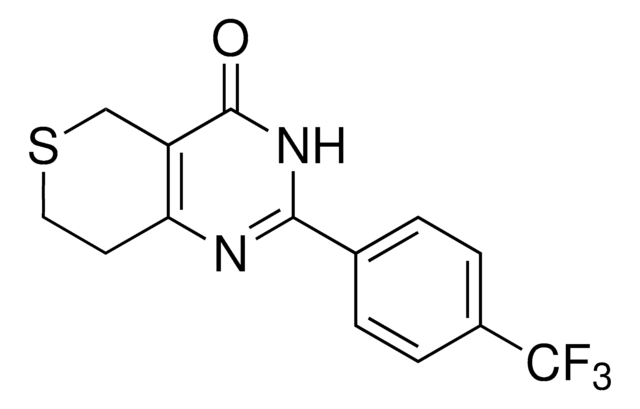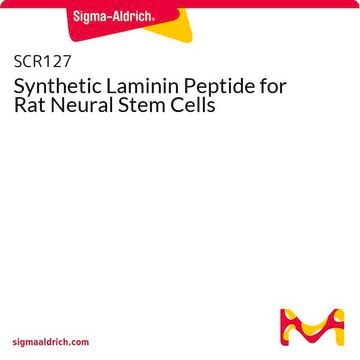おすすめの製品
由来生物
rabbit
品質水準
抗体製品の状態
affinity isolated antibody
抗体製品タイプ
primary antibodies
クローン
polyclonal
精製方法
affinity chromatography
交差性
mouse, human
テクニック
immunocytochemistry: suitable
western blot: suitable
NCBIアクセッション番号
UniProtアクセッション番号
輸送温度
ambient
ターゲットの翻訳後修飾
unmodified
遺伝子情報
human ... TFE3(7030)
詳細
Transcription factor E3 (UniProt P19532; also known as bHLHe33, Class E basic helix-loop-helix protein 33, TFE3) is encoded by the TFE3 (also known as BHLHE33) gene (Gene ID 7030) in human. TFE3 contains adjacent helix-loop-helix (HLH) and leucine zipper (LZ) domains flanked by an upstream basic region. It specifically recognizes and binds E-box sequences (5′-CANNTG-3′). TFE3 is ubiquitously expressed and can directly associate with DNA as either homodimers or heterodimers formed with two related proteins, TFEB or TFEC. In association with TFEB, TFE3 activates the expression of CD40L in T-cells, thereby playing a role in T-cell-dependent antibody responses in activated CD4+ T-cells and in thymus-dependent humoral immunity. TFE3 binds to and activates the microE3 motif of the immunoglobulin heavy-chain enhancer to induce B-cell-specific gene transcription and DNA recombination. TFEB is expressed at low levels in the embryo, but is expressed at high levels in the trophoblast cells of the placenta, where it plays a critical role in regulating normal vascularization. It has been shown that the exit from pluripotency is gated by intracellular redistribution of TFE3. Chromosomal aberrations involving TFE3 have been reported in patients with papillary renal cell carcinoma. Ref.: Betschinger, J., et al. (2013). Cell 153, 335-347.
特異性
This polyclonal antibody targets the human TFE3 leucine zipper region sequence.
免疫原
KLH-conjugated linear peptide corresponding to a leucine zipper region sequence of human TFE3.
アプリケーション
Research Category
エピジェネティクス及び核内機能分子
エピジェネティクス及び核内機能分子
Anti-TFE3, Cat. No. ABE1400, is a highly specific rabbit polyclonal antibody that targets transcription factor E3 (TFE3) and has been tested in Immunocytochemistry and Western Blotting.
Immunocytochemistry Analysis: A 1:500 dilution from a representative lot detected TFE3 in 4% paraformaldehyde-fixed, 0.5% Triton X-100-permeablized MEF-1 mouse embryonic fibrolasts.
品質
Evaluated by Western Blotting in NIH/3T3 nuclear extract.
Western Blotting Analysis: 0.1 µg/mL of this antibody detected TFE3 in 10 µg of NIH/3T3 nuclear extract.
Western Blotting Analysis: 0.1 µg/mL of this antibody detected TFE3 in 10 µg of NIH/3T3 nuclear extract.
ターゲットの説明
~75 kDa observed. Target band size appears larger than the calculated molecular weight of 61.52 kDa due to posttranslational modification. Uncharacterized bands may be observed in some lysate(s).
物理的形状
Affinity purified.
Purified rabbit polyclonal antibody in buffer containing 0.1 M Tris-Glycine (pH 7.4), 150 mM NaCl with 0.05% sodium azide.
保管および安定性
Stable for 1 year at 2-8°C from date of receipt.
その他情報
Concentration: Please refer to lot specific datasheet.
免責事項
Unless otherwise stated in our catalog or other company documentation accompanying the product(s), our products are intended for research use only and are not to be used for any other purpose, which includes but is not limited to, unauthorized commercial uses, in vitro diagnostic uses, ex vivo or in vivo therapeutic uses or any type of consumption or application to humans or animals.
適切な製品が見つかりませんか。
製品選択ツール.をお試しください
保管分類コード
12 - Non Combustible Liquids
WGK
WGK 1
適用法令
試験研究用途を考慮した関連法令を主に挙げております。化学物質以外については、一部の情報のみ提供しています。 製品を安全かつ合法的に使用することは、使用者の義務です。最新情報により修正される場合があります。WEBの反映には時間を要することがあるため、適宜SDSをご参照ください。
Jan Code
ABE1400:
試験成績書(COA)
製品のロット番号・バッチ番号を入力して、試験成績書(COA) を検索できます。ロット番号・バッチ番号は、製品ラベルに「Lot」または「Batch」に続いて記載されています。
Kaushal Asrani et al.
The Journal of clinical investigation, 129(12), 5584-5599 (2019-09-19)
The microphthalmia family of transcription factors (MiT/TFEs) controls lysosomal biogenesis and is negatively regulated by the nutrient sensor mTORC1. However, the mechanisms by which cells with constitutive mTORC1 signaling maintain lysosomal catabolism remain to be elucidated. Using the murine epidermis
Kaiyuan Wu et al.
Autophagy, 17(11), 3707-3724 (2021-02-26)
The mechanisms orchestrating recycling of lysosomes through autophagic lysosome reformation (ALR) is incompletely understood. Previous data show that genetic depletion of BLOC1S1/GCN5L1/BORCS1 increases autolysosome (AL) accumulation. We postulated that this phenotype may manifest due to perturbed ALR. We explored this
ライフサイエンス、有機合成、材料科学、クロマトグラフィー、分析など、あらゆる分野の研究に経験のあるメンバーがおります。.
製品に関するお問い合わせはこちら(テクニカルサービス)








